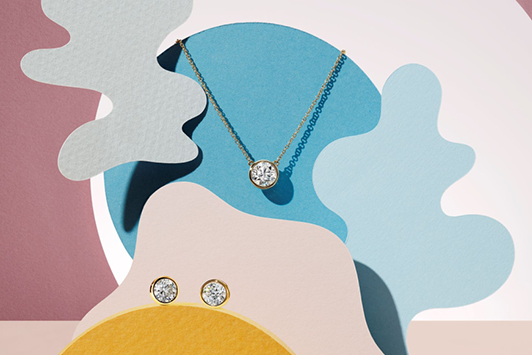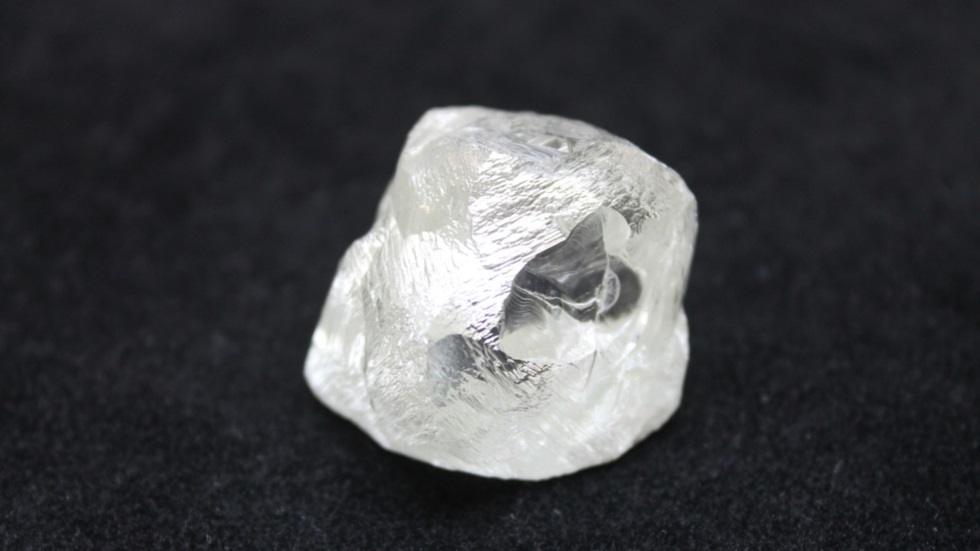
When De Beers first introduced its Lightbox lab-grown jewelry brand in 2018, the diamond world sat up and took notice. The mining giant had long been outspoken about its belief that synthetic stones were neither special nor unique. And despite having entered the field itself, the company still holds by that sentiment. Since first making waves throughout the trade, it has done its utmost to create a clear distinction between the two types of stones, touting natural diamonds as a higher-value, engagement-worthy offering, and positioning Lightbox’s products in what brand CEO Steve Coe delineates as “the accessibly priced fashion-jewelry space.”
But a look at the market four years on suggests that this message may have been lost in translation.
The opening gambit
After the initial shock of the Lightbox announcement wore off, the general theory in the natural-diamond industry was that the brand was De Beers’ strategy for negating the perceived threat of lab-grown. Understood but unspoken in its marketing was that Lightbox aimed to create an alternative stream for synthetics — one that wasn’t bridal and wasn’t in that price range.
“I think there was a great opportunity for lab-grown diamonds that De Beers didn’t want to pass up,” says Dick Garard, president of the International Grown Diamond Association (IGDA). “They thought they had a marketing strategy there…. They came out with a pricing structure, and the intent was to drive the pricing down to that point. I think their overall intent was to help augment their mined-diamond business.”
Jewelry consultant Pam Danziger also took Lightbox’s debut as a warning shot to synthetics — a way of reframing them as a lesser alternative to natural stones, not as a luxury product.
“De Beers tried to tell the consumer what lab-grown diamonds were for,” she says. “They said it’s for fashion, not for anything serious. It was like they were trying to exert market control and keep lab-grown in a separate lane.”
Of course, a company as big and well-known as De Beers can’t rock the boat without creating some far-reaching ripples, and it did — just not necessarily the ones it may have been expecting.
Stamp of approval?
If De Beers’ subliminal strategy was to create an invisible barrier around the space where lab-grown was supposed to reside, the plan did not unfold as it was meant to. Rather than decreasing interest in synthetic diamonds as a viable alternative to natural, the company’s move into the space solidified lab-grown’s legitimacy among trade members and consumers alike.
“[De Beers] kind of heightened the awareness and desire for lab-grown diamonds,” explains Adrienne Fay, vice president of Warren Buffett-owned jeweler Borsheims. “Maybe it was an unintended consequence, rather than a misstep, that by trying to point out that this is a product inferior to mined diamonds, it sort of highlighted the fact that it’s actually a product very similar to mined diamonds, and that there is a demand for it.”
The De Beers name on lab-grown jewelry became the ultimate stamp of approval for customers, agrees Eileen Hopman, owner of Hopman Jewelers in Elkhart, Indiana. Whenever she saw doubt from shoppers about the validity of synthetics, she says, she would whisper the magic words: “Even De Beers is selling lab-grown.” From there, the purchase was usually a fait accompli.
Traders, too, have taken the De Beers move as an endorsement, reports Mark Clodius, owner of Clodius & Co. Jewelers in Rockford, Illinois.
“It certainly prompted overall approval throughout the industry, and quite dramatically,” he says. “It achieved so much publicity that it was hard for jewelers to ignore it.”
“What De Beers has…been successful at is having price consistency among diamond growers.”
Adrienne Fay
Vice President, Borsheims
The bridal boom
Fay, Hopman and Clodius are among the jewelers that were already carrying lab-grown diamonds before the launch of Lightbox. From the brand’s debut in 2018 until a year later, the retailers saw a big jump in growth, with sales doubling or better every year after that.
Consumer surveys appear to support this trend. The number of bridal shoppers who feel a natural diamond is important has gone down, according to a 2021 survey from wedding website The Knot. Nearly one quarter of all engagement ring purchases last year featured a man-made center stone, it found — an increase of 11% over two years. Another study, this one by jewelry insurance business Brite & Co., confirms that lab-grown is gaining on natural when it comes to bridal appeal: The market share of synthetic-diamond engagement rings grew to more than 28% in 2021 from 19% the year before, while average spending rose 9%, not far behind the 12% increase that mined stones enjoyed.
Despite the data, however, De Beers insists it will not hop on the lab-grown engagement train and says it still sees synthetics functioning most promisingly in fashion. The lower price point of that segment “opens up a very exciting opportunity for a much higher level of repeat purchases,” says Coe. “There are some retailers out there that are pushing the [engagement] avenue very strongly…but we see the big opportunity for lab-grown elsewhere.”
Still, by setting a bar and sticking to it, Lightbox might be missing out. The bulk of lab-grown sales at Borsheims are for bridal, and synthetics make up approximately 60% of engagement ring purchases at Clodius. Hopman, who first began carrying them as an alternative to natural stones, says they’ve become her bread and butter, making up 90% of all engagement center stones she sells. The lab-created gems have become so popular with her buyers that she has stopped carrying natural diamonds unless they’re preset in a piece she really likes.
“Like De Beers, we were initially promoting them more for fashion jewelry versus engagement rings,” she explains. “But more people came in and wanted bigger diamonds, and as the prices for mined diamonds began to increase, they were stuck settling for either a smaller diamond or a lesser-quality stone. And we began showing them the lab-grown. Once we let them know the Federal Trade Commission (FTC) had sanctioned them as real diamonds, they took off.”
“There are some retailers out there that are pushing the [engagement] avenue very strongly…but we see the big opportunity elsewhere.”
Steve Coe
CEO, Lightbox
The price is right
One thing De Beers has managed to do, Fay believes, is contain the price of lab-grown, though not at the $800-per-carat level that Lightbox charges. Not even at the $1,500-per-carat price tag of its Finest line, which includes synthetic stones with a higher color range of D to F.
“De Beers, because they’re such a behemoth, they’re going to have an impact,” asserts Fay. “I think what De Beers has managed to disrupt, and been successful at, is having price consistency among lab-grown diamond growers.”
The figures seem to prove her right. Within six months of Lightbox’s arrival on the scene, the average discount for a 1-carat lab-grown diamond grew to 42% of the equivalent natural stone — up from 29% in January 2018, just before the De Beers brand launched, according to data that Reuters cited from industry analyst Paul Zimnisky. Meanwhile, wholesale prices for synthetics fell 13.3% from 2019 to 2020, according to online marketplace Virtual Diamond Boutique.
Clodius and Hopman are currently selling lab-grown engagement rings at approximately 50% to 70% of their natural counterparts’ prices, depending on the cut and carat weight of the stone, and the price they pay their lab-grown suppliers has dropped since 2018. However, they’re a bit more hesitant to attribute the latter development to Lightbox. So is Zimnisky.
“I believe it’s the overall fundamentals of the market that are pressuring lab-grown diamond prices — particularly the supply side of the equation — not Lightbox per se,” Zimnisky says. “Perhaps the Lightbox launch a few years back has accelerated this trend, but when you really look at the supply fundamentals of the space, how many new producers have entered the space in the recent past, I think it’s more production growth and production improvements that have accelerated supply [and] most heavily weighed on prices.”
“It was like [De Beers was] trying to exert market control and keep lab-grown in a separate lane.”
Pam Danziger
Jewelry consultant
Down the line
What does the future hold for lab-grown, and will De Beers play a role in how it gets there? The answer depends on whom you ask.
“Will lab-grown diamonds fall into fashion? Yes,” says the IGDA’s Garard. “But will they also still fall into bridal and high-end? Absolutely. And supply is too tight to meet demand currently, so to have a carat sell for $800? I think that’s a bit low.”
Zimnisky disagrees: “Ultimately, I think the Lightbox price point is the right level for the lab-grown diamond product in general. Sometimes I think it’s too low, and sometimes I feel that it’s too high, so that’s probably a sign that it’s just about right — for now, at least. However…in five years’ time, this price point will probably seem too high. I think we’ll see $500 per carat or less in 10 years’ time. Longer-term, I think the price point is what will ultimately relegate the product to more ‘fashion’-oriented — more so than marketing efforts.”
Source: Diamonds.net










